
French Brioche
Baking and Desserts | French cuisine
⏳ Time
5 hours
🥕 Ingredients
7
🍽️ Servings
10
Description
A butter roll and milk is a classic quick breakfast that, however, requires either a trip to the store for those very rolls or meticulous work the day before. If you are one of those who prefer homemade baked goods over store-bought, here’s a great recipe for a classic French brioche. Kids can enjoy it with butter, while you can have it with a poached egg and hollandaise sauce. Recipe by head baker John Smith from a local bakery.
Ingredients
- Wheat Flour - 17.6 oz
- Milk - 5 fl oz
- Butter - 4.4 oz
- Sugar - 4.4 oz
- Salt - 0.4 oz
- Chicken Egg - 3 pieces
- Dry yeast - 0.4 oz
Step by Step guide
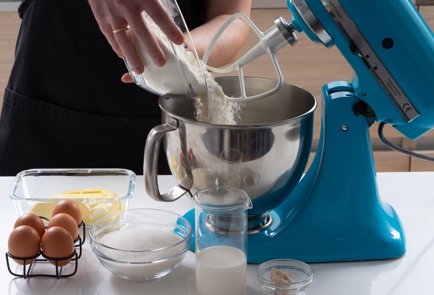
Step 1
Mix the dry ingredients in a mixing bowl.

Step 2
Pour in the milk and, using the lowest speed, mix in 2 eggs with a paddle attachment.
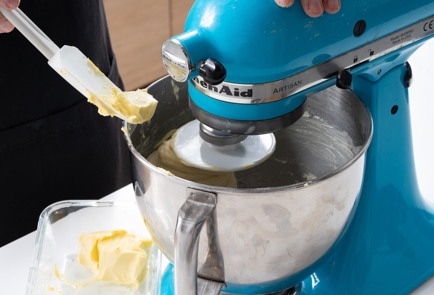
Step 3
In 10–15 minutes, the mixture will come together around the hook, becoming soft and slightly rough to the touch. At this stage, begin to incorporate the butter in small pieces. Add the next portion of butter only when the previous one has fully blended into the dough. As a result, the dough should become homogeneous, very soft, sticky to the hands, and spread across the sides of the bowl.
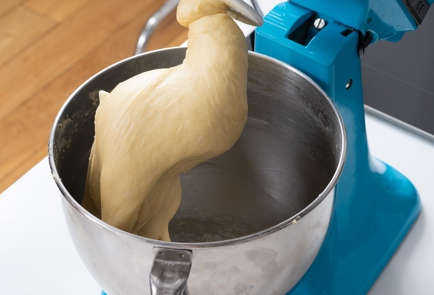
Step 4
After adding all the butter, knead the dough on low speed for another 2 minutes. Then switch to the dough hook and increase the mixing speed to maximum. Knead the dough for 20–30 minutes or longer, depending on the mixer, butter, and flour. During this process, the hook will gradually gather the dough around itself. Occasionally turn off the mixer and take a 3-minute break. This is to avoid burning the mixer and to prevent the dough from overheating. You can tell that the process is nearing completion by the sound: as the dough gathers, a characteristic slapping noise against the sides of the bowl will begin.
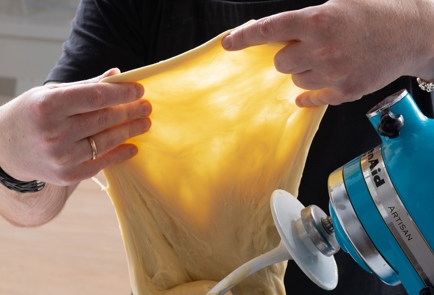
Step 5
When the sides of the bowl are clean and all the dough is on the hook, check its consistency: when stretched, the dough should not tear but stretch to a thin film (experts refer to this as the gluten window). If everything is right, gently scrape the dough off the hook and transfer it to a bowl or leave it in the mixing bowl, cover it with plastic wrap, and let it sit in a warm place without drafts for 1 hour. When the dough has doubled in volume, knead it, cover it with plastic wrap, and refrigerate it for 8 hours.
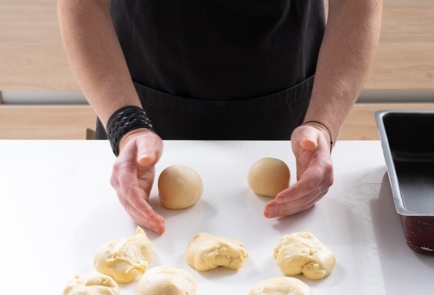
Step 6
Take the dough out of the refrigerator, divide it into eight equal pieces, and roll them into round balls.

Step 7
Arrange the buns in two rows in a standard loaf pan (length 21.5–22 cm, height and width 10–11 cm). Cover the pan with plastic wrap and let the buns rise in a warm place for 2–4 hours, but no longer to prevent over-proofing.
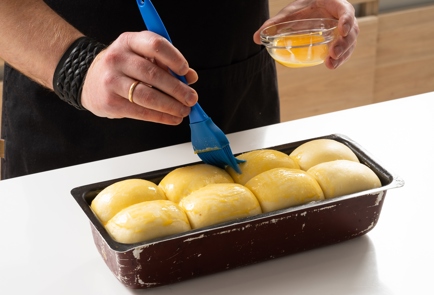
Step 8
Brush the buns with beaten egg and place them in a preheated oven at 320°F, using the convection mode, for 40 minutes. You can check for readiness with a toothpick, but it will also be visible to the eye: the buns should rise well, spilling over the edges of the pan, and acquire a rich brown, golden hue.
Cooked This Dish? Share Your Delicious Creation with the Community! 🥰
Snap a photo and let everyone see your culinary masterpiece. Inspire others and showcase your skills!
Users Photos
No photos yet
Leave a Comment
Please log in to leave a comment.